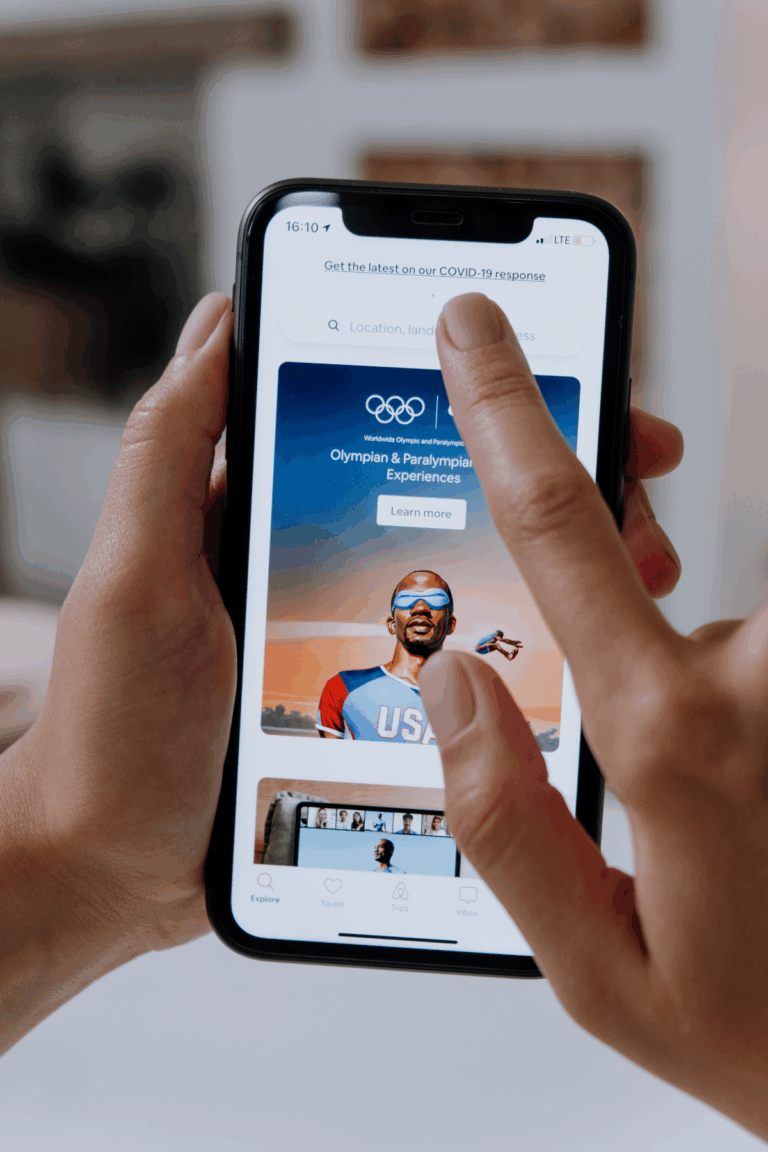
branding
5 Signs Your Brand Needs a Refresh (and What to Do About It)
Why Branding Evolves with Your Business
Your brand isn’t a one-time project—it’s a living, breathing part of your business. As your services grow, your audience shifts, and your goals evolve, your brand should evolve too. What once felt fresh and aligned may no longer reflect who you are, what you offer, or the kind of clients you want to attract. Growing and adapting is a part of life and the same with your business. What worked 5 years ago may not now. “Refreshing” does not need to be scary and really you should be looking at your brand more often than you think.
If things feel a little “off” lately, your brand might be trying to tell you something. Here are 5 signs it’s time for a brand refresh—and what you can do about it.

Common signs of inconsistency include:
- Using different logos, fonts, or color palettes across platforms
- Shifting tone of voice (professional in one post, playful in another)
- Outdated taglines or messaging that no longer reflect your services
- Mixed messaging about what you offer or your services
- Visual styles from post to post or platform to platform do not aline
What to Do:
Start by auditing your current brand assets. Make a list of every place your brand appears—social media profiles, website, email signature, presentations, PDFs, etc.—and evaluate whether they match visually and in tone.
Then, create a simple brand style guide. Even a one-page guide with your logo, colors, fonts, voice/tone guidelines, and messaging pillars can make a huge difference. Use this guide to ensure every piece of content and communication aligns with your brand identity. Use pictures from pinterest to gain inspiration of what you want your brand to look and feel like.
If needed, bring in a designer or brand strategist to help you clean things up and establish a more cohesive look and feel across all platforms.
sign 1
Inconsistent Visuals or Messaging
Have you ever looked at your own brand and felt like it was telling different stories in different places? Maybe your website feels sleek and modern, but your Instagram feed is casual and quirky. Or your business cards still feature an old logo while your LinkedIn profile has a completely different color scheme. You may have started on all these platforms at different times in your business which is why they are inconsistent.
These kinds of inconsistencies are more than just aesthetic issues—they confuse your audience and weaken your brand credibility.
When people interact with your brand across various platforms—your website, social media, emails, print materials, marketing—they should get the same experience every time. Your brand is the first thing your customer will see before they even speak to you. Consistency builds trust, and trust builds loyalty. If your visuals or messaging are all over the place, it’s hard for people to understand who you are and what you stand for and ultimately why should they work with you or buy from your brand.

remember
A consistent brand isn’t boring—it’s reliable. And reliability builds recognition, trust, and ultimately, conversions. Also revisit your brand every year, do you need to freshen up some details, has your client base changed?

What to Do: Reconnect with Your Ideal Client
Start by getting ultra-clear on your ideal client profile:
- Who are they?
- What are they struggling with?
- What do they value?
- How do they want to feel after working with you?
- Where are they looking for the service you offer?
Once you know who you really want to serve, adjust your messaging to speak directly to them. Use language that reflects their challenges and desires. Showcase testimonials or case studies from past ideal clients. Align your visual identity with the kind of audience you want to attract. Set yourself up on platforms your audience is already going to for help. And most importantly—don’t be afraid to say no to the wrong people. A strong brand doesn’t try to please everyone. It boldly communicates who it’s for and more importantly, who it’s not for.
sign 2
You’re Attracting the Wrong Audience
One of the clearest signs that your brand needs a refresh is when you’re consistently drawing in people who aren’t the right fit for your business
Maybe you’re an IT consultant looking to help small businesses with their technology needs but your inbox and phone is getting bombarded by elderly people asking you about your services and needing help setting up their home printer. If your brand is attracting the wrong crowd, it’s likely because your messaging, visuals, or positioning aren’t clearly communicating who you serve and how you help.
This misalignment often leads to:
- Discovery calls that go nowhere
- Price resistance or confusion
- Low engagement from your ideal audience
- Feeling stuck working with clients who drain your energy
The truth is: the wrong audience isn’t bad—they’re just not your people. And when your brand is unclear or outdated, it will attract a mismatch by default.

remember
Your brand is your filter. When it’s working well, it will attract the right people—and gently steer away the ones who aren’t a match.

Common Signs of an Outdated Logo or Website:
- Your logo looks pixelated, overly complex, or designed for a previous era
- You’ve added new offers/services, but your website doesn’t reflect them
- The design feels cluttered, hard to navigate, or visually inconsistent
- You cringe when someone asks, “What’s your website?”
What to Do: Give Your Brand a Visual Makeover
- Start with your logo: Does it still reflect your style, audience, and values? A strong logo should be versatile (works in black and white, on social media, in small sizes) and instantly recognisable.
- Refresh your website: Update your layout, typography, imagery, and messaging. Make sure your site is mobile-friendly, loads quickly, and clearly guides visitors to take action (book, buy, or connect).
- Update your assets: Revise your business cards, email templates, and social graphics to reflect the new look. Consistency builds brand recognition.
- Keep the user in mind: Design your website for the people you want to attract. Make navigation simple, information clear, and calls to action obvious.
sign 3
Outdated Logo or Website
You know the saying “don’t judge a book by its cover” well, in the digital age that does not apply. Your logo and website are often the first impressions people have of your brand—and in the digital age, first impressions are everything. If your visuals look like they belong in a different decade or no longer reflect the quality of your work, it’s a clear sign your brand needs a refresh.
Think about this: Would you feel confident sending a high-ticket client to your current website? Does your logo reflect the level of professionalism you bring to the table? If you hesitate to say “yes,” your visual identity may need to be looked at.
Your logo and website are not just decorative—they’re strategic tools. A modern, clean, and aligned visual identity communicates professionalism, builds trust, and supports sales. On the flip side, an outdated look can signal to potential clients that your business is behind the times—even if your services are top-notch.

pro tip
You don’t always need a complete rebrand. Sometimes a thoughtful refresh—new fonts, modernized logo, updated imagery—is enough to breathe new life into your visual presence.

How to Know If There’s a Disconnect:
- Your audience engages with your content, but never buys
- Your content feels flat or overly “corporate”
- You rarely get messages like “I feel like you’re talking to me”
- People don’t remember your brand—or worse, confuse it with others
- Your story, mission, or “why” isn’t clearly communicated anywhere
What to Do: Bring Heart into Your Brand
- Share your story: Talk about why you started, the challenges you’ve overcome, and the values that drive you. Vulnerability and authenticity build connection.
- Use “you-focused” language: Speak directly to your audience’s desires, fears, and goals. Let them see themselves in your content. Show you understand them and their needs.
- Show your personality: Ditch the robotic or overly formal tone. Whether you’re quirky, bold, nurturing, or sarcastic—let your real voice come through.
- Infuse meaning into your visuals: Use imagery, color, and design that evoke the right mood and feelings for your brand. Your visuals should support the emotional tone you want your audience to experience.
- Be consistent with your values: Align your content, offers, and interactions with what you stand for. People connect with brands that feel genuine and grounded in purpose.
sign 4
Lack of Emotional Connection with Your Audience
In a world flooded with content, products, and services, the brands that stand out aren’t just the most polished or most professional—they’re the ones that make people feel something. They are real. Remember you are dealing with REAL people.
If your brand is struggling to spark engagement, build community, or inspire loyalty, chances are you’re missing an emotional connection with your audience.
Think of the brands you love most. Chances are, you don’t just like their product—you connect with their values, their story, or the way they make you feel. That’s the power of emotional branding.Emotion is what turns passive followers into raving fans and raving fans into customers. It builds trust, loyalty, and long-term relationships.

pro tip
Ask your audience how your brand makes them feel. The answers might surprise you—and they’ll give you powerful insight into what’s working (and what’s not).

What This Looks Like:
- Your messaging no longer reflects your current services or expertise
- Your brand identity feels too small or outdated for your expanded business
- Your audience is confused because your offerings or values have shifted but your brand hasn’t caught up
- You’re attracting different types of clients than you used to, but your brand still speaks to your old audience
- Your brand’s tone or visuals don’t align with the new level of professionalism or scale you’ve achieved
What to Do: Align Your Brand with Your Growth
- Evaluate your current brand assets: Assess whether your messaging, visuals, and tone truly reflect where your business is today — not where it was when you started.
- Refresh your visuals: Consider new logos, color palettes, or design elements that feel more mature or aligned with your expanded offerings.
- Communicate your growth story: Share the journey and evolution of your business with your audience. This builds trust and helps people understand your new direction.
- Involve your team: Make sure everyone representing your brand understands the updates and embodies the refreshed identity.
sign 5
Business Growth Outpaced the Brand
Your business isn’t static — it evolves. Maybe you started as a solo freelancer and now have a growing team. Perhaps you began with a single product or service, but your offerings have multiplied or shifted entirely. Or your target market has changed as you refined your niche.
Your brand is the face of your business — it should grow with you, not hold you back. If your brand feels stuck in the past while your business is moving forward, it can create confusion, dilute your message, and limit your growth potential.
A brand that lags behind your business can make you seem out of touch or unprepared for bigger opportunities. It may also cause friction internally, with your team unclear about what your brand stands for or how to represent it consistently.
When your business grows or changes faster than your brand does, the disconnect becomes glaringly obvious — and that’s a major sign you need a brand refresh.

remember
Your brand should be a living, breathing reflection of your business journey. When it keeps pace with your growth, it becomes a powerful tool that propels you forward — opening doors to new clients, opportunities, and success.

final thoughts
Branding isn’t just a design task—it’s a growth strategy. Refreshing your brand can reinvigorate your business, attract better clients, and reestablish your presence in a competitive market.
So if any of these signs resonated with you, take it as permission to evolve. Your brand should grow with you, not hold you back.









